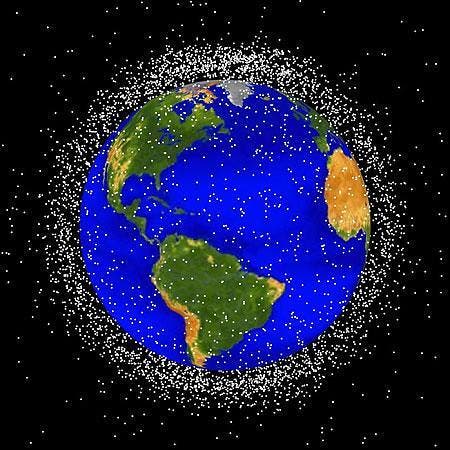Cleanliness is next to godliness — and it’s also needed in space. So NASA is providing funding for researchers to study how best to do so.

Orbital debris is a growing concern for space agencies around the world. Such space trash represents the build-up of man-made objects that revolve around the Earth without serving a purpose. It includes debris, fragments, even abandoned rocket stages or spacecraft that no longer function. All of this has been steadily building up ever since humanity first reached the Earth’s orbit.
As part of NASA’s efforts to clear Earth’s orbit and ensure that humanity can still reach out into space, the agency will be funding research proposals from three university-based teams over the next year to look into this subject. These projects will analyze the social, economic, and policy issues needed to ensure that we keep our orbit clean enough to ensure the sustainability of space travel.
Cleaning our surroundings
“Orbital debris is one of the great challenges of our era,” said Bhavya Lal, associate administrator for the Office of Technology, Policy, and Strategy (OTPS) at NASA Headquarters in Washington. “Maintaining our ability to use space is critical to our economy, our national security, and our nation’s science and technology enterprise.”
“These awards will fund research to help us understand the dynamics of the orbital environment and show how we can develop policies to limit debris creation and mitigate the impact of existing debris.”
A buildup of space debris around our planet could realistically prevent us from leaving the planet. Such a hypothetical scenario, in which the density of debris around a planet is so great that any attempts to clear them out will, instead, lead to the generation of even more debris is known as the “Kessler syndrome“. Reaching such a state is pretty much a game-over for any civilization’s ability to leave their planet or enable themselves to do so without outside help.
Three proposals were selected by NASA following their evaluation process. These were titled “Adaptive Space Governance and Decision-Support using Source-Sink Evolutionary Environmental Models”, “An Integrated Assessment Model for Satellite Constellations and Orbital Debris”, and “Communication and Space Debris: Connecting with Public Knowledges and Identities”.
The details and results of these research projects will be made available on the agency’s website at a later date.
For now, this initiative showcases NASA’s concern with preventing our planet from developing the Kessler syndrome. It also really shows just how much humanity’s fingerprint is expanding over the world around us. Technology and machines only started being used to a meaningful extent around 200 years ago, with the onset of the Industrial Revolution. Since then, we’ve littered the Earth’s orbit and even left trash behind on Mars.
NASA has previously estimated that there are hundreds of millions of pieces of debris, zipping around Earth’s orbit right now. The fastest-flying of these can reach speeds in excess of 28,000 kilometers per hour (17,500 mph), which imparts them with enough energy to severely damage spaceships in any potential impact.
This is the latest initiative in a long string of efforts to control and contain space debris. Earlier this year, the European Space Agency (ESA) announced a partnership with Astroscale and OneWeb aimed at developing spacecraft that can capture non-functional satellites from low Earth orbit. The International Space Station (ISS) is set to receive an active protection system meant to keep it safe from impacts with space trash.
For now, the issue of space trash is concerning, but not yet dire. If we don’t take corrective action, however, we might see Earth finally get its own rings — of trash — before we’re locked down here forever.


